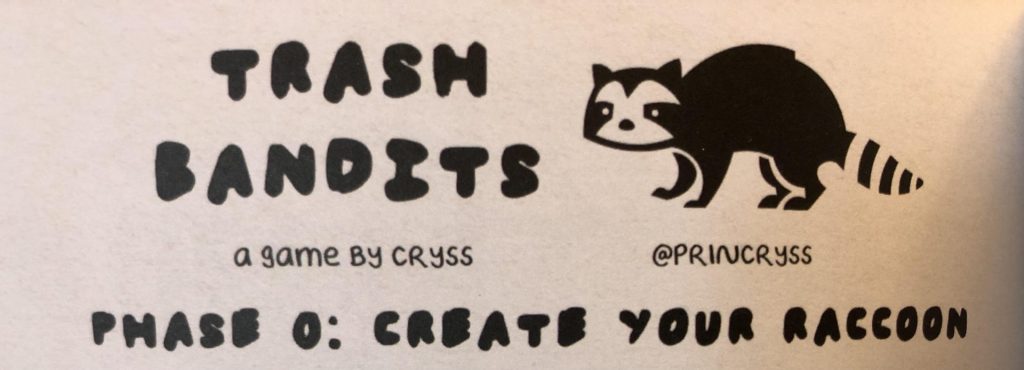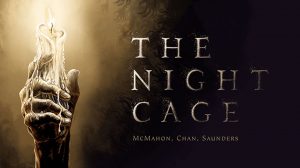Disclosure: Meeple Mountain received a free copy of this product in exchange for an honest, unbiased review. This review is not intended to be an endorsement.
Author’s Note: I have endeavored, where possible, to identify each designer referenced in this article by both their proper name and the social media handle associated with the game.
If you follow the independent tabletop roleplaying game scene, you might recall a project called Tiny Library (from Long Tail Games) which went to Kickstarter back in 2021. This little box was packed with 50 RPGs, each small enough to fit on a single card. Part of the product’s charm was its compact size and the unbridled creativity found within. You can read my review of Tiny Library here, but I think this statement sums it up: “As a snapshot of the indie RPG community, it’s fascinating. As an anthology, it’s full of great ideas packed into a small space. No matter what you’re looking for, you’re almost guaranteed to find it in this box…”

Now Long Tail Games is back with Tiny Tome, a follow-up that trades in the deck of cards for an actual book. None of the games in the two entries overlap, making them a nice complement to each other. Similar to its predecessor, the games found in Tiny Tome were submitted through popular independent publishing site itch.io with the highest-ranked ones selected for publication. Each game was entered as 1 double-sided page and appears as a 2-page spread in the physical product, allowing readers to easily browse through for their next game.
Tomeward Bound
Of course, this isn’t just a larger rehash of Tiny Library, despite the fact that the two projects have quite a few designers in common. The shift from card-sized to full-page games allows for significantly more complicated games both narratively and mechanically. Where Tiny Library was audacious in its attempt to make small games feel big, Tiny Tome feels slightly less ambitious yet ultimately more full. There’s not as much emphasis on “bolt-on” pieces designed to supplement existing games and much more focus on works that stand entirely by themselves.

The one identifiable supplemental piece is The Nemesis Jar from Brendan Evans (Ogrillion). This clever add-on is designed for use with “the world’s most popular roleplaying game” though there’s nothing stopping you from adapting it for any long-term RPG campaign. Which you’ll likely want to do, because it’s an excellent piece of design that incentivizes players to create intense rivalries with named enemies by giving them access to special dice to use during play. As the rivalry builds, the characters get access to larger and larger dice, drawing on their historic enmity to reach ever-greater heights. I love it and can’t wait to find a place for it in a future campaign.
While that’s the only creation intended to be slotted into a preexisting world, a few of the games in Tiny Tome are based on tried and true mechanics rather than wholly unique designs. Often called “hacks”, these are twists on openly available systems that generally change the thematic elements with relatively few tweaks to the mechanical bits. This may sound like a less inspired option, but the truth is that a good hack requires both a deep understanding of the source material and a fresh, interesting new take that allows the hack to stand out from the original. (You can read our review of i’m sorry did you say street magic for a glance at how a well-made hack creates something incredible from familiar parts.)

And there are some very well-made hacks in this book. Beast at Bay by Ive Sorocuk (ive) uses the Second Guess system to tell a great solo story about a character slowly transforming into a beast. Presumably you’ll choose a werewolf or similar, but my mind went immediately to Gregor Samsa and I appreciate that the game is flexible enough to make these different options feel equally valid. Ilex Opaca’s Alone in the Tower is a sweet, thoughtful fairy tale take on Alone Among the Stars, with a parade of moments and days spent trapped in a remote tower filling the space of the original game’s planet-hopping discoveries. Players who like something with more mechanical crunch might prefer Longing for Tranquility (WuDeRPG), a combat-heavy monster fight which builds off of the LUMEN rules, or 2088: The Best of Us (Marc Strocks / spacesibling), a post-apocalyptic nightmare based on 24XX and packed full of crumbling architecture and fungal zombies. The sheer range of these (and the other hacks included in the book) shows just how much potential lies in reworking someone else’s system.
All Booked Up
As far as wholly original creations, there are plenty of those in Tiny Tome as well. Some are lighthearted, like Trash Bandits (princryss), a quick and punchy game of raccoons attempting nigh-impossible heists. It’s all set-up, with players free to do as much raccoon-ish roleplaying as they please. By contrast, Kiryl Krayushkin’s Wishmasters, a game about whimsical birds who fulfill wishes, uses its seemingly silly premise to conceal a rather thoughtful investigation into what we truly want. And I was thrilled to see Messages at Sunset from Courtney MM (astorysomewhere) whose A Room in a Pocket was one of my favorite games in Tiny Library. Courtney’s ability to make quiet, contemplative games with no meaningful stakes – in this case, a game of discovering messages from afar washed up on the beach – speaks to the kinds of experiences I love in roleplaying games.

Others are much more serious in tone, like Alfred Valley’s impressively sparse and stylish old-school dungeon-crawler Ossuary. The two-player game Conjur by Austin Skye Leavitt (supernalclarity) is a very sharp entry that evokes the rhythms of a séance, with the conjuring player spending tokens to purchase prompts that guide the spirit’s responses. Another particularly intriguing title is the fighting game Blood//Rush by The Dice (plural_dice), which uses a trick-taking mechanic rarely seen outside of classic card games to recreate the feel of a Mortal Kombat-style martial arts tournament.
There are several more experimental games to be found here as well, the kinds of indie gems that make you wonder why no one thought to do this before. James Chip is known for innovative games, so it’s no surprise to see The Cutout, which revolves around cutting a window into the page, holding it against an open book, and using the text in the visible space to guide play. Seiđr, by Gavrok, is another unusual entry. This tale of Vikings is highlighted by a handmade glyph-covered diagram: players roll dice directly onto the image, using the numbers on the dice and the undefined symbols the dice land on to tell a story. It’s a fascinatingly clever mechanic that’s like nothing I’ve seen before.
From a presentational standpoint, though, The Climb (Christian Yetter / cnyetter) steals the show. In this tale of mountain-climbing gone horribly awry, players hold pieces of string between them to symbolize the ropes that tie climbers to each other. During a scene, both players pull at the string, hoping that it doesn’t break or get pulled out of their hand. As the game progresses, these strings will eventually falter – as will the expedition’s hopes for survival. With a gorgeous visual layout, a cleverly thematic mechanic, and a starkly somber tone, The Climb might just be my favorite from this book.
I’d be remiss not to mention Armanda Haller’s Unknown Oceans, a game played while traveling from one destination to another. The player will mirror their own journey by using a voice app on their phone to record journal entries from the perspective of a long-gone sailor. At each real-world intersection, the player will check their compass (or a 4-sided die) and use the result to glean prompts regarding the boat’s travels. The game ends when the player reaches their destination. While it’s one I certainly don’t expect to play often, the clever mix of theme and mechanics gives Unknown Oceans an innovative feel that makes me want to go for a long walk.
And Steve Dee — the veteran designer behind Tin Star Games — offers something I never expected to see in this book: an expansion. Yes, you read that correctly. Dee’s game Two Faces is a solo game about a monstrous character who both seeks and rejects companionship from purer souls. Driven by a coin-flip resolution system that nicely ties the theme and mechanics together, one of the game’s pages is devoted to the basic gameplay and the other expands on that gameplay with additional charts. Two Faces is a sleek, elegant thing of beauty that serves as a great example of what this book packs within its pages.
Only Tome Will Tell
I’ve only hit some of the highlights found in Tiny Tome, though I think the overall quality of this set is higher than in Tiny Library. As with any anthology, there are a few entries that didn’t quite connect with me personally. However, the increased space for each game means that even those rare misses still have something to offer and I have no doubt that most RPG enthusiasts will find plenty to like here.

Taken all together, I’m very impressed with Tiny Tome. It feels more mature, more polished than its smaller sibling without sacrificing any of the wild brilliance that made the previous entry so much fun. However, it does run up against some issues. Slipping a deck of cards into a pocket is a lot different than carrying a book, even a slender volume like this. Moreover, a book of small RPGs doesn’t stand out as much compared to similar products. Worth mentioning too is that each game requires a bit more work to get started. There are some technical limitations also, particularly noticeable with games that use the pages themselves for play. As someone who steadfastly refuses to deface a book, two or three entries just aren’t playable for me (unless I pick them up separately through itch.io, which I certainly might do).
All of these are small issues, easily overshadowed by Tiny Tome’s greatest strength: it’s really really cool. There are a lot of good, well-made games in this book. It’s a solid mix of fresh takes on familiar favorites and brand-new creations to get your creative juices flowing. Crunchy, flavorful, storytelling, character-driven, solo, duet, guided, GM-less, experimental, edgy: it’s all here. There’s almost nothing in this book that I would take out. Like its predecessor, Tiny Tome is a testament to the many wonderful designers in the independent RPG community. You owe it to yourself to pick up a copy and check them out.
Take a look at Tiny Tome on Kickstarter today to jumpstart your next RPG session!











Add Comment